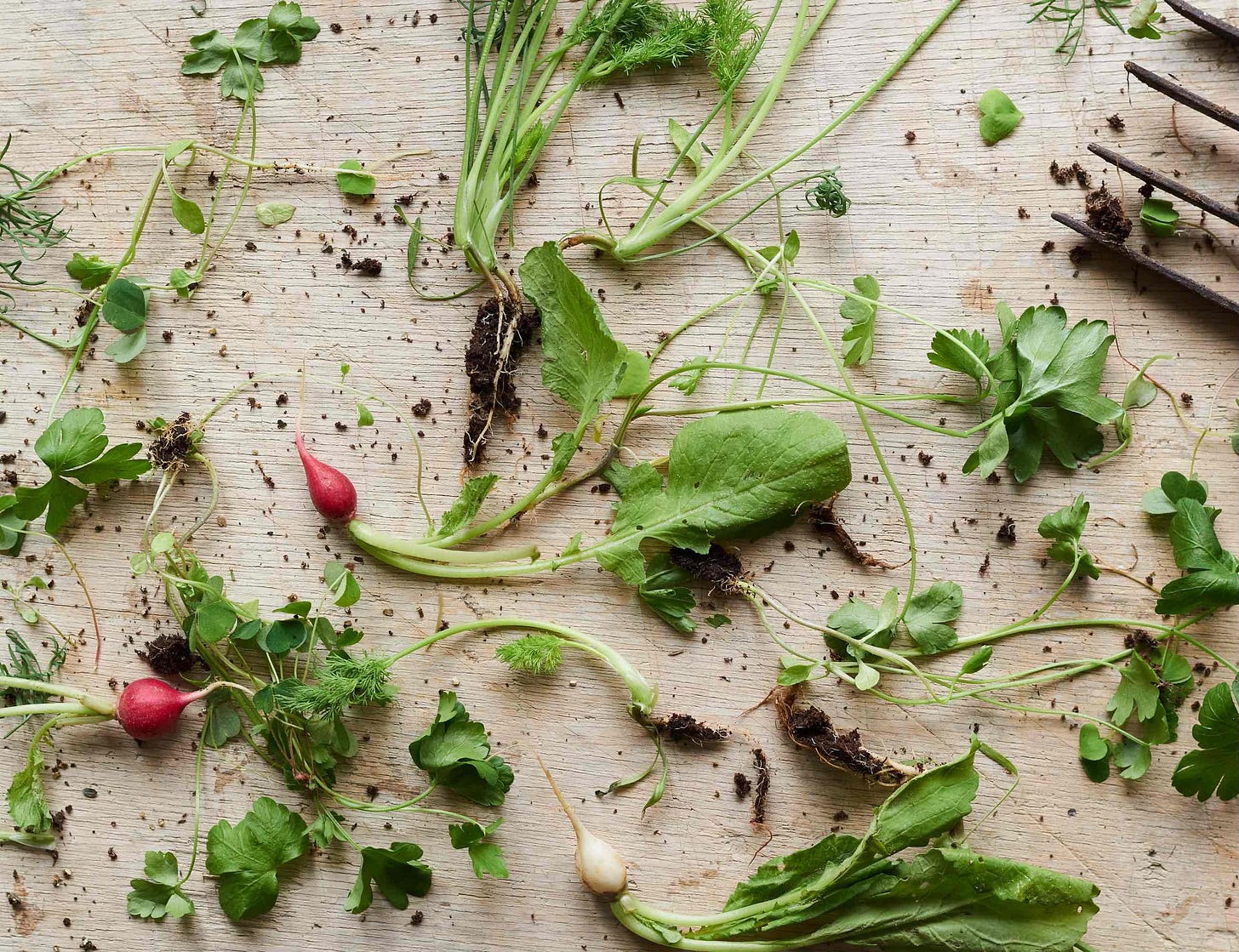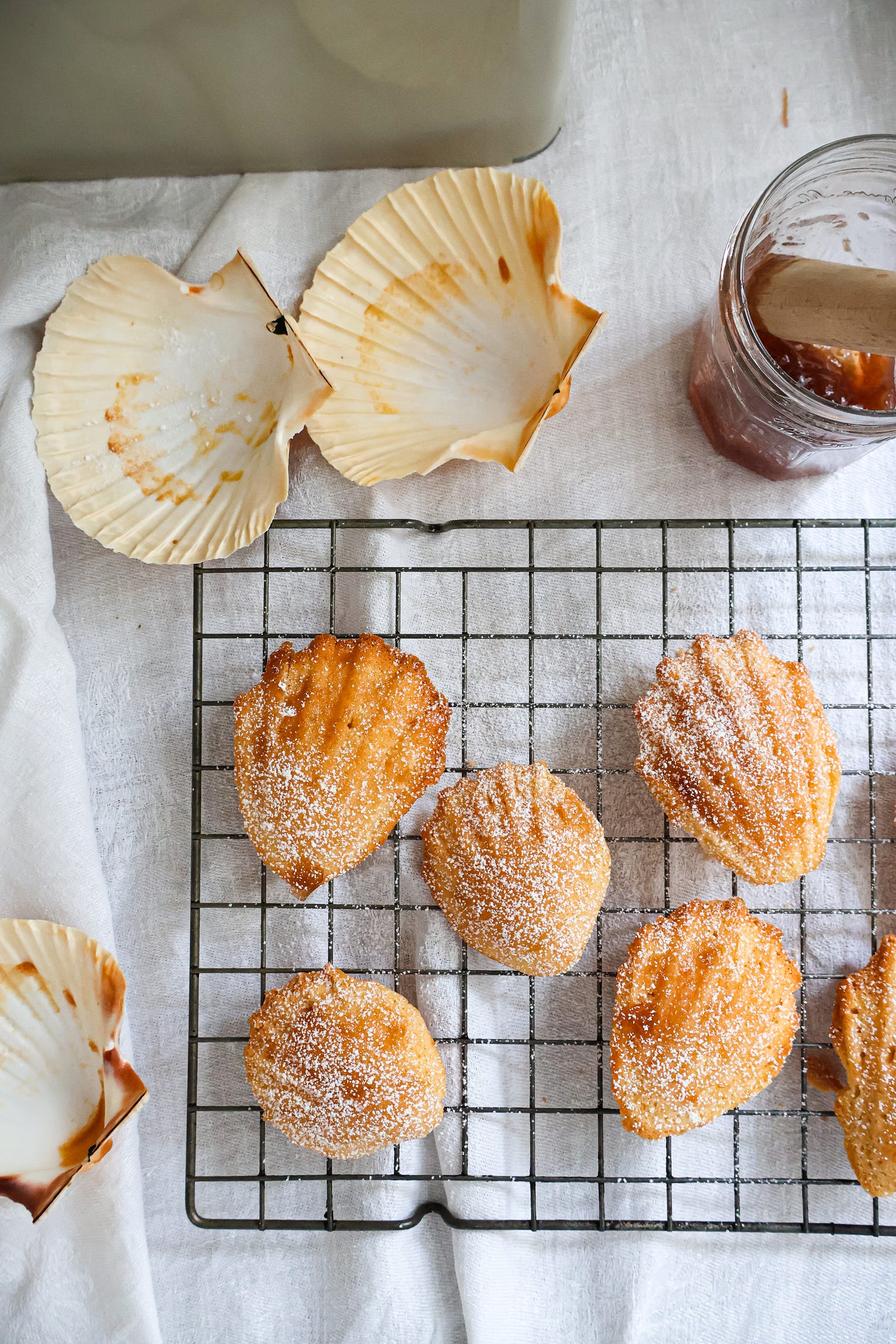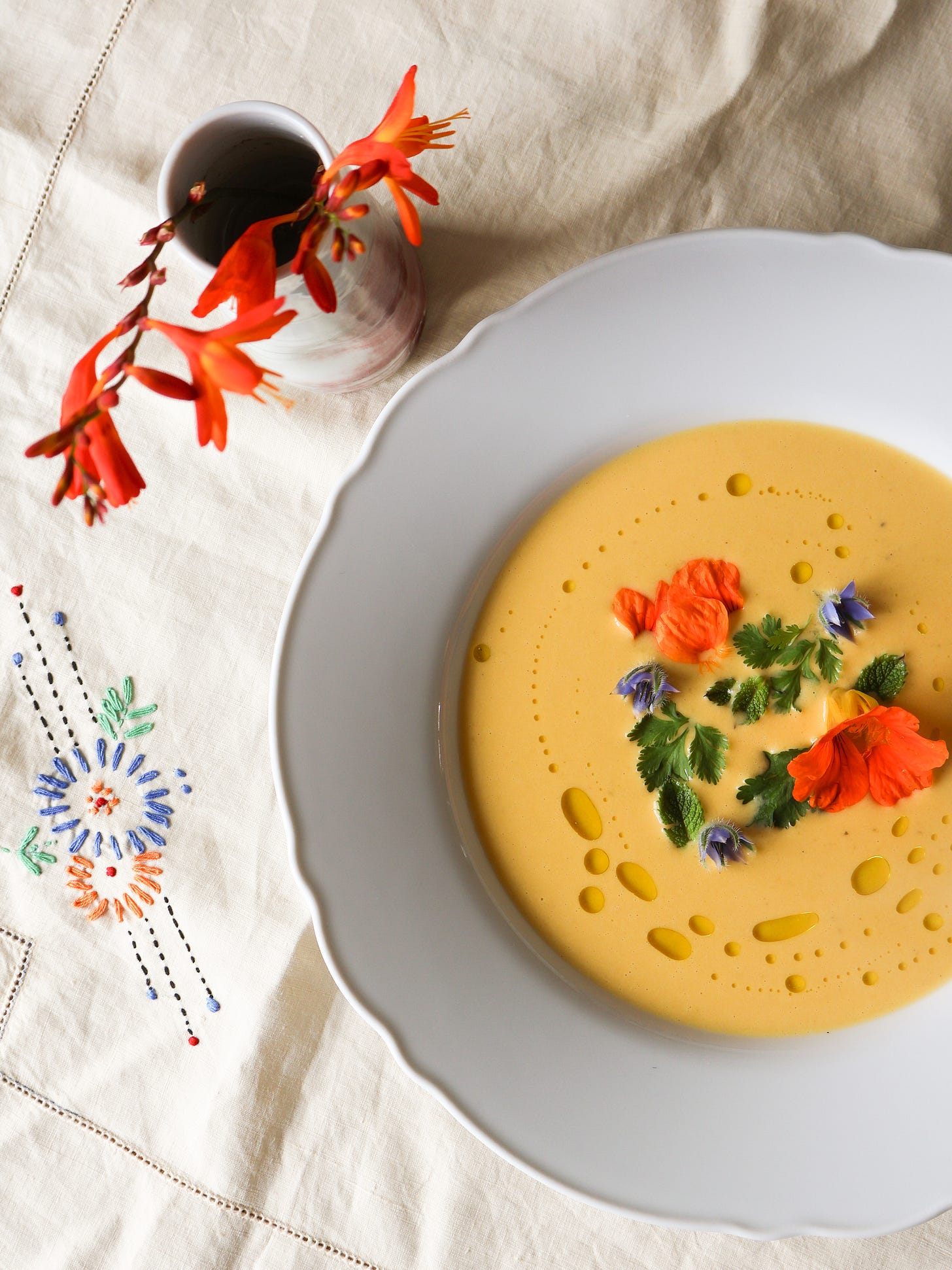MARCH NEWSLETTER
Seed sowing chat, compost tips, beautiful springtime recipes from Emily Scott, plus a VERY exciting new series of in-person cookery classes in London.
Hello you lovely lot. It’s time. The gloves are off (or should that be on if they’re gardening gloves?) and the seed sowing has begun. This month, my recommendations for buying and sowing seeds and, most excitingly, I’m delighted to share some springtime recipes from my wonderful friend,
.Finally, news on a series of in-person cookery demonstrations at Fortnum & Mason - more below. I’d be so chuffed to see some friendly faces in the group if you’re in town. They’re going to be really special so I do hope you can come.
Right. To the garden.
Seed Sowing Frenzy
It’s peak seed sowing time. Now, we’ve all come round to the notion of growing sustainably, but we, or at least, I, don’t always remember that this includes where we buy our seeds from. Producing seeds can be hugely energy intensive, and sometimes involves more chemicals than seems right, so it’s worth investigating the companies you buy from. My favourites seed companies are:
Of course, seeds isn’t the only way. If you are short on time and space, plug plants are a lifesaver. But beware, some of the plug plants you buy from the big seed companies are abysmal. I’ve known them arrive dead and sweaty in a squashed plastic tray which looks like it got drop-kicked in the warehouse. Those delivering plug plants in a more humane fashion include:
Delfland Nurseries (sadly only delivering to allotment groups and larger growers now, but they have a nursery you can visit too for domestic purchases)
Do think about compost too. Seeds don’t like many obstacles, so opt for a fine textured growing medium. They also don’t like to be overfed, which is why seed compost often has fewer nutrients than multi-purpose. I do use multi-purpose (SylvaGrow Organic which is peat-free, obvs) for sowing, but for my star seeds, the tricksy or expensive ones like tomatoes, for example, I use Dalefoot Wool Compost for Seeds which is the price of gold, but absolute rocket fuel.
If this is giving you itchy fingers, you might like this month’s video about how to sow seeds (giddy excitement included). Here’s a little trailer:
And for a hippy-woo take on the magic of seed sowing, there’s this month’s Tale, On Wonder.
And if you have other recommendations, do share them in a comment, we’d all love to know:
Emily Scott’s Springtime Recipes


I wanted to introduce you to a friend of mine,
. You've probably seen her Substack - Shore to Shore - with her beautiful recipes and enviable life by the sea.We've been friends ever since our first books happened to be published on the same day. Joint book birthdays is enough to bond any food writers, but Emily and I also discovered we both shared a love of the seasons and look inspiration for our recipes from the land around us: hers from the sea and shore of her Cornish home, mine from the veg patch (which both happen to be our book titles).
We meet every summer at various food festivals to have good natter between friends, though that's usually in front of a crowd as we cook together on a demo stage, me always hoping to snaffle the plate Emily has cooked before anyone notices at the end of the demo. Her food is beautiful, intelligent and transporting.
Apart from her cooking, what I love about Emily is her generosity of spirit. In an industry that can be full of competition and comparison, Emily is only ever delighted and delightful. And on that note, she has generously shared with us some of her favourite recipes - Cantaloupe Melon Gazpacho and her Seaside Madeleines - which are both recipes from her second book, Time & Tide. Emily cooked these for me last year and I can tell you, they are absolute crackers.
Seaside Madeleines
I have tried to perfect these beautiful light sponges that I have had great affection for over the years. Hot from the oven and brushed with jam, one is never enough. In my restaurant we found that using upcycled scallop shells works beautifully as madeleine moulds and sets the seaside scene perfectly.
100g unsalted butter
100g golden caster sugar
2 large free range eggs
100g plain flour
1⁄4 teaspoon baking powder
Pinch cornish sea salt
1 lemon, zested
Melted butter, for greasing
3 tbsp rhubarb jam, to glaze (or any jam you love)
Scallop shells, washed, scrubbed and brushed with butter and dusted our.
Lightly butter the scallop shells and dust with our. Gently melt the butter in a pan. Allow to cool. Sift the flour and baking powder and add the sugar, lemon zest and salt into a bowl. Beat the eggs lightly and whisk into the mixture followed by the melted butter. If the mix is a little thick add a splash of milk (you are looking for a ribbon consistency) cover and chill the batter for at least one hour or preferably overnight.
Preheat the oven to 180C, once at temperature, ladle or spoon the batter into the buttered and floured madeleine moulds or like me use scallop shells as moulds. Bake for 8-10 minutes. I love madeleines just brushed with jam and dusted with icing sugar, but of course dipping the end in melted chocolate is extraordinarily good or dip the warm sponges into Pedro Ximénez.
Cook’s note - If you have time it really is good if you can leave the batter to rest for at least an hour or if you can get ahead, overnight. Best eaten straight away and if there happens to be any left they make great sponges for tiramisu or trifle.
Cantaloupe Melon Gazpacho
This lovely recipe is from *On the Boat chapter* in my book Time & Tide and the recipe that I demonstrated at Rock Oyster Festival. Colour, colour, colour a beautiful soup or gentle curry for the warmer days of the year.
2 tablespoon olive oil
4 shallots, chopped
1kg ripe, cantaloupe melon, skinned and chopped
8 sticks lemon grass, tough outer leaves removed and thinly sliced 1 green chilli, finely sliced
1 tablespoon of chopped fresh ginger
1 onion, finely chopped
4 kefir lime leaves
1 tin coconut milk
3 limes, zest and juice (plus extra for serving)
1 small bunch of coriander, chopped
1 small bunch of mint, leaves only chopped
Cornish sea salt
Garnish - herbs, edible flowers, extra lime juice, olive oil
Serves 4
Halve the melons, scoop out the seeds. Chop the flesh into chunks. Heat 1 tablespoon of olive oil in a saucepan over a medium heat add the shallots, lemon grass, chilli, and ginger and a pinch of salt. Sauté stirring until the onion is translucent as gently as possible as you do not want any colour. Add the lime leaves and melon and season once again with a little salt. Reduce the heat to very low and simmer very gently, stirring occasionally until the melon has completely fallen apart, approximately 20 minutes.
Remove from the heat and stir in the coconut milk and lime zest and juice. Once cool, remove the lime leaves and blend in a food processor until smooth. Pass through a sieve for a really smooth texture. Taste and season with salt and pepper and lime juice if needed. Refrigerate until chilled. Serve in bowls or mugs with the reserved melon pieces, chopped herbs, drizzle of olive oil and extra lime wedges.
Cook’s note - Cantaloupe melon is essential to get the bright orange colour. Keep 8 small pieces of melon back for garnish if serving in bowls. Kefir lime leaves keep well in the freezer.
Fortnum and Mason’s Seasonal Sundays
I’m starting a new series of cookery demonstrations and lunches at Fortnum & Mason’s as part of the Fortnum’s events programme in their Food and Drink studio. Excited doesn’t cover it.
The first is on Sunday 7th April and will see us shopping in the food hall whilst it’s closed (like Night in the Museum but tastier - I know!) then heading upstairs to cook our haul and eat lunch together.
I’m so proud of this project and I really hope you can come. Book quick though, there’s only a few spots.
Know someone who might enjoy this free newsletter? Spread the word:












How exciting about the Sundays at Fortnums! Hats off to you, they sound very fine indeed